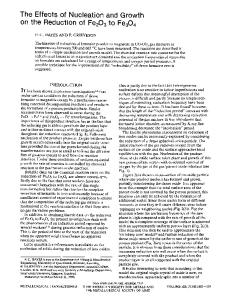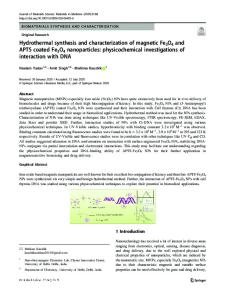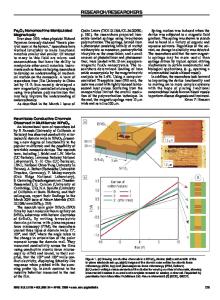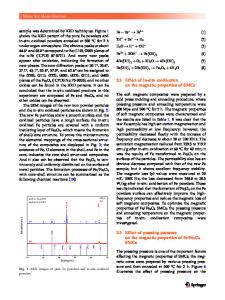Thermoanalysis of the combined Fe 3 O 4 -reduction and CH 4 -reforming processes
- PDF / 733,539 Bytes
- 7 Pages / 604 x 784 pts Page_size
- 38 Downloads / 344 Views
I.
INTRODUCTION
I N a previous article, Ill we proposed to combine two energy-intensive industrial processes: (1) the reforming of methane to synthesis gas and (2) the reduction of iron oxide to iron, by reducing iron oxide with CH4, using solar energy as the source of high-temperature process heat. The use of methane as a reducing gas in the reduction of iron ore has been previously investigated in connection with the direct reduction (DR) processes as an alternative to blast furnaces in the iron making industry (References 2 through 8 and literature cited therein). Direct reduction is defined as any process in which iron is produced by reduction of its oxides at temperatures below the melting point of any of the materials involved.* Most DR processes (Mydrex, HYL, Armco,** *The melting points of Fe, FeO, and Fe304 are 1809, 1693, and 1811 K, respectively. **ARMCO is a trademark of Armco, Inc., Middletown, OH.
Purofer, Fior) employ synthesis gas, a mixture of H 2 and CO, as the reducing agent./2J But aside from having value as a reductant, synthesis gas is widely utilized in the chemical industry as feedstock for the production of hydrogen, ammonia, methanol, and other important fuels and chemicals, t31 Synthesis gas is obtained primarily by catalytic steam reforming of natural gas whose chief constituent is CH4. The reforming reactor precedes the reduction reactor in the DR process flow sheet. Alternatively, CI-L could be used as the reducing agent instead and undergo partial oxidation to produce synthesis gas. The advantages would be threefold: (1) the reforming of natural gas in the absence of catalysts and with proper optimization may be made to produce highquality synthesis gas; (2) the evolved gases of such a DR process are sufficiently valuable commodities to justify their collection and thus eliminating gas emissions to the A. STEINFEI.D, A. FREI, and P. KUI-IN are with the Laboratory for Energy and Process Technology, Paul Scherrer Institute, 5232 Villigen-PSI, Switzerland. Manuscript submitted May 2, 1994. METALLURGICAL AND MATERIALS TRANSACTIONS B
atmosphere; and (3) the integration of the natural gas reforming and the iron ore reduction into the same reactor could improve energy efficiencies through concurrent high-temperature reactions and thus reduce energy requirements and costs, leading to a more competitive process. The kinetics of the iron oxide reduction with CH4 have been studied in laboratory furnaces using either packed or fluidized beds. Barret t4] studied the system FeO-CFL and observed that the reduction is carried mainly by Hz and CO formed by intermediate reactions; the reforming of CFL is weakly catalyzed by Fe and is the ratecontrolling step. Ghosh e t a l . [s~ measured reaction rates for the reduction of Fe203 with CFL in the temperature range of 1073 to 1298 K and found that the decomposition of CH4 into C and H2 controls the overall reaction rate. The rate of the reduction by 1-t2 was found to be 4.5 times more than that with CI-I4. Haas e t a l . 16J compared rates of reductio
Data Loading...











